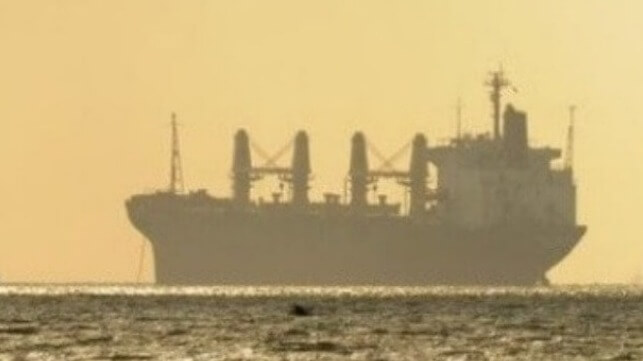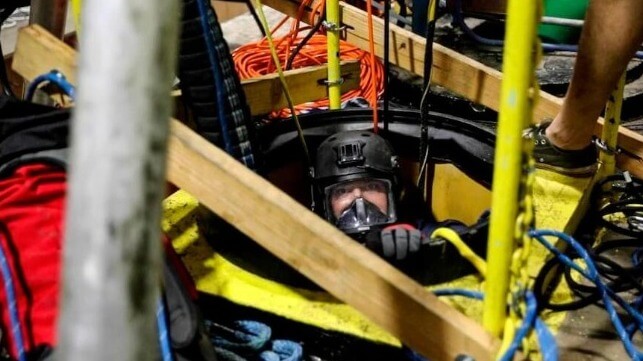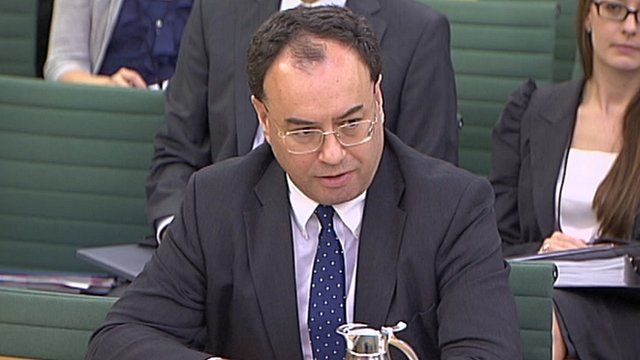First Power Achieved from South Korea’s First Commercial Offshore Wind Farm
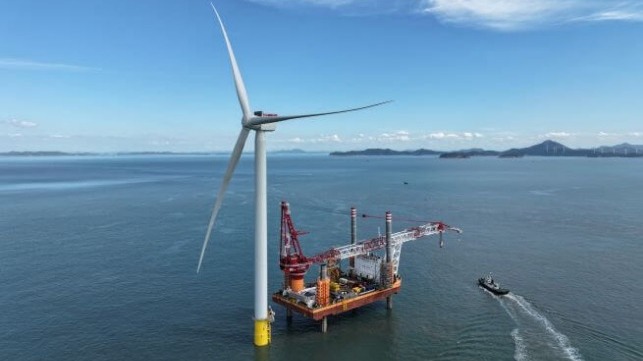
South Korea marked a milestone in its efforts to join the growing list of countries around the world generating power from offshore wind farm installation. First power was generated from the country’s first commercial-scale wind farm, in a test phase, marked by a visit from the country’s Prime Minister Han Duck-soo to inspect the site and hail the industry’s achievement.
The project known as Jeonnam 1 is located off the southwest coast of Korea in a location northwest of Jaeun Island. It is a fixed-bottom offshore wind farm that when completed will generate 96MW and is viewed as a building block for South Korea’s large ambitions for offshore wind power.
Construction on Jeonnam 1 started in early 2023 and turbine installation started in September 2024. The project is being developed by Copenhagen Infrastructures and its Copenhagen Offshore Partners in partnership with South Korean conglomerate SK Innovation E&S. CIP highlights that it entered the South Korean market in 2018 due to its strong belief in the potential for the industry.
“First power from Jeonnam 1 is a landmark for CIP, our partners, and the offshore wind industry in South Korea,” said Thomas Wibe Poulsen, Partner in CIP.
SK highlights that the project is part of the larger regional plan for Korea with this district projected to ultimately have a capacity for 8.2 GW, which would make it the largest in the world. With the project moving into test operation, SK expects it will help to build support for private investment which will give further momentum to the development of the Jeonnam offshore wind farm complex.
Prime Minister Han stated during the visit to the site, “The activation of offshore wind power will solidify the foundation for energy security and serve as an opportunity for Jeonnam to emerge as a leading region in new and renewable energy.” The Prime Minister instructed the relevant ministries to continue providing close support.
South Korea’s Ministry of Trade, Industry, and Energy (MOTIE) in September mapped the next steps toward accelerating the development of the offshore wind sector. They selected an area near Incheon as the location for a three-phase offshore wind farm complex that will have a total capacity of 2 GW. The project is due to be in development until December 2026 and will require approximately KRW 8.9 billion in investment ($6 million) in its next phase. It also reported that the MunmuBaram Floating Offshore Wind Project (based in Ulsan, South Korea) had completed an Environmental Impact Assessment (EIA).
The government expects to auction 7 to 8 GW of capacity by 2026. Of that, 2.5 to 3 GW is projected for floating wind with the larger portion in fixed-bottom wind turbines. The country has pledged to achieve carbon neutrality by 2050 and to reach that goal Korea has ambitious plans calling for 14.3 GW of installed capacity by 2030.
SK highlights that it has approximately 5 GW in the pipeline for development. It plans to expand by approximately 1 GW per year to reach 7 GW by 2025. In addition to Jeonnam 1, CIP has plans for Jeonnam 2 and Jeonnam 3 with a total capacity of 800MW, and the 1.5 GW Haewoori floating offshore wind project.
The timeline for commercial operations at Jeonnam 1 is targeting March 2025 reports SK Innovation E&S.
Fishing Vessel Chartered by Offshore Wind Farm Grounds Off Rhode Island
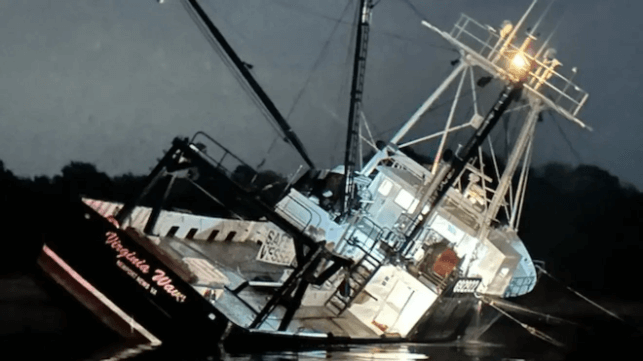
Early Monday, a fishing vessel reportedly contracted to work on the Revolution Wind project ran aground in a channel near Jamestown, Rhode Island, prompting a rescue and response operation.
In the early hours of Monday Morning, the Virginia Wave grounded near Beavertail State Park, between Narragansett and Jamestown, Rhode Island. The good Samaritan vessel Deep Cygnus rescued four crewmembers, and all made it safely off the boat without injury. Luckily, the vessel avoided flooding, even though it took on a severe list during its time aground.
The Virginia Wave refloated later in the day and the crew reboarded, then returned to the port of Quonset - but not before the boat spilled an undetermined amount of diesel fuel.
The Coast Guard is assessing the environmental impact of the small-scale spill, according to local media. Orsted, operator of Revolution Wind, has not yet commented.
Revolution Wind is a 700 MW, 65-turbine offshore wind farm located 15 miles south of the Rhode Island coast and 32 miles southeast of Connecticut, adjacent to South Fork Wind. It is built to supply power markets in both Rhode Island and Connecticut.
Work on the project began in 2023, and the first turbine was installed in September 2024. Delays in completing an onshore substation have pushed back the opening date for the project from 2025 to 2026, and Orsted booked an impairment charge on Revolution Wind in August due to construction delays.
A previous project partner, Eversource, sold its stake in Revolution Wind at a loss earlier this year.
Norway & Portugal New Collaboration Ahead of Iberia’s Offshore Wind Venture
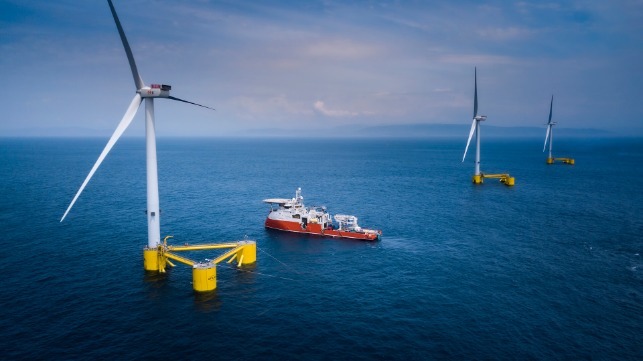
[By: WavEC Offshore Renewables]
Heavyweights from Norwegian industry are descending on Portugal to drive collaboration as Iberia’s offshore wind plan takes flight
‘Portugal and Norway: Fostering Offshore Wind Supply Chain Development’ takes place at the Museu do Oriente, Lisbon, on December 3.
The open event is being hosted by WavEC Offshore Renewables in collaboration with the Embassy of Norway in Portugal, Innovation Norway and Norwegian Offshore Wind. For full programme details and registration, click here.
Keynote speakers include Hanne Brusletto, Norwegian Ambassador to Portugal and Lidia Bulcão, Portugal’s Secretary of State for the Sea. Other participants include DGEG, DNV, Source Galileo, Qair, TechnipFMC, Odfjell Ocean Wind, Vestervind Contractors, Global Maritime, ETERMAR, Principle Power, X1Wind, Gazelle, Wergeland Group, Reach Subsea, SINTEF, APDL (Ports of Douro, Leixões and Viana do Castelo), Port of Aveiro, Port of Setúbal, the Norwegian Marine Energy Test Centre (METCentre), plus Portuguese Test Site Companhia de Energia Oceânica. The event will be closed by Portugal’s Secretary of State for Energy.
The conference comes just months after the Portuguese Government unveiled an updated version of the National Energy and Climate Plan (NECP) for 2021-2030, containing ambitious targets for offshore wind energy as part of a broader strategy to accelerate the country's energy transition.
Previously, Portugal set a target of 300 MW for offshore wind capacity by 2025. Recognising the critical role of renewable energy in combating climate change and enhancing energy security, the government set a new goal of 2 GW of offshore wind by 2030.
WavEC CEO Marco Alves said Portugal is now actively engaging international partners to accelerate progress and encourages all parties interested in Iberia’s offshore wind expansion to join the “must attend” event.
“We are delighted to be welcoming partners from Norway which is playing a leading role in the burgeoning offshore wind industry, especially floating wind,” he said. “With this year’s focus on supply chain development, it will be especially instructive to hear the views from our expert panellists as Portugal prepares to kickstart a new era in offshore wind. Supply chains are an essential pillar driving success across entire project lifecycles — from design and construction to installation and operation, and decommissioning — ensuring efficiency, cost-effectiveness, and scalability in offshore wind development.”
Portugal phased out coal-fired power generation in 2021 and currently generates around 60% of its electricity from renewable sources, including hydropower, wind, and solar. The NECP has set a target to increase this share to 80% by 2030, contributing significantly to the European Union's broader climate and energy goals.
The national Offshore Renewable Energy Allocation Plan (PAER) has designated a 10 GW reserve capacity for offshore wind, aligning with the draft National Energy and Climate Plan (NECP). Public consultation for new policies began in Q3 2024, with the first site auctions expected in mid-2025. Around 50 companies expressed initial interest in December 2023 auctions.
In Norway, around 98% of electricity is produced from renewables. In addition to wind power, the Scandinavian nation has more than 1,500 hydropower plants, boasting half of Europe’s reservoir storage capacity.
Deputy to the Commercial, Innovation, and Tourism Counselor of Norway – Innovation Norway Rodrigo Ballesteros Cruz said: “the great offshore expertise built along the last decades has derived in the adaptation and creation of new technologies applied to the offshore wind industries. Being both maritime nations, Norway and Portugal have the possibility to collaborate in order to lead the further development of sustainable solutions applicable to the offshore wind industry.”
Einar Tollaksvik, leader of the Portugal Working Group of Norwegian Offshore Wind said: “Norway has important assets in offshore wind. Decades of offshore experience, a complete supply chain, and world-class technology and digital solutions. Norwegian innovations have paved the way for floating offshore wind. Due to projects at the METCentre and the pioneering floating offshore wind farm Hywind Tampen, our supply chain already has hands-on experience with floating offshore wind.”
WavEC is a world-renowned “centre of excellence” focusing on the development of marine renewable energy through R&D, knowledge transfer and innovation. The non-profit organisation heavily supports the EU’s Horizon Europe Programme and has delivered more than 70 R&D projects in the marine renewables sector and corresponding support technologies. It has worked in collaboration with more than 350 partners in 32 countries. A co-founder of the OceanACT consortium, WavEC also co-manages the Aguçadoura test site in north Portugal, promoting offshore testing infrastructures to support blue economy technologies.
Click here to register to attend the event - “Portugal and Norway: Fostering Offshore Wind Supply Chain Development.”
The products and services herein described in this press release are not endorsed by The Maritime Executive.
